Lansche Audio No.4.1 Loudspeaker
| Ultimate reward or audiophile road apple? |
|
|
|
November 2010 |
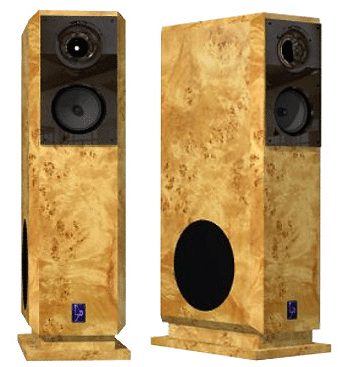
Of all the components that make up my system, the loudspeaker has presented the most treacherous terrain on which to navigate. Like a young Frodo Baggins traversing the foreboding landscape of Fangorn Forest, finding the perfect speaker has proven to be far more perilous and rewarding than even I could have imagined. From financial limitations to manufacturer shenanigans, there have been many roadblocks between my audiophile yearning and the realization of that dream.
A Little History?
While there were many which came before, my first true love was the Avalon Radian, clad in a stunning burled walnut veneer. I cut my teeth reviewing with these wonderful speakers and lived happily with them for nearly ten years. As would be the case, I fell prey to the upgrade bug and moved on to the controversial Talon Khorus loudspeakers and then on to the Talon Firebirds. After a year with those, I decided to throw down and order a pair of the then, yet to be released, Von Schweikert VR7. These too were finished in my favorite burled walnut veneer. A full year after placing the order, I finally received them. It was love at first listen. However, unforeseen situations occurred that forced me to sell them. I gave the Dynaudio Evidence Master a try. I soon realized I just could not warm up to those entirely, so it was back to the hunt. With the arrival of the Sunny Cable Technology SWH15, I had found stunning sound, but with my living room doubling as my listening room, I ultimately needed something a tad less monolithic.
During this time, friend and future ex-business partner, Sam Laufer of Laufer Teknik, returned home from the Munich High-End audio show with word about a speaker he thought I might find compatible, the Lansche Audio No.4.1. Modest in size for a super-speaker, and employing truly unique technology in the form of the Corona Plasma tweeter and dual 10″ 400 watt powered subs per side, Sams’ enthusiasm quickly rubbed off on me. Figuring my luck couldn’t get any worse, I ordered a pair.
The speakers arrived in individual flight cases, and were swathed in soft chamois covers. loved it. Included with each speaker was an outboard power supply for the woofers’ 400 watt amps and the Corona tweeters’ power needs. Upon first impression, you know you are dealing with a serious product. The gloss finish that rests upon the burled Poplar veneer is flawless. The veneer itself is book matched yielding perfect visual symmetry. The workmanship is worthy of the finest furniture grade craftsmanship and goes a long way in justifying the $55K price.
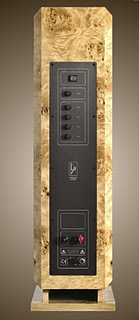 After some positioning trial and error, I ended up with the speakers nearly ten feet apart and five feet from the rear wall. Toe-in is not ultra critical, I have had them aimed nearly at my ears and firing almost straight ahead with equally great results. Once broken in, you can make final adjustments to the bass and the output of the Corona tweeter via five knobs located on the rear panel. Covering frequencies from 30Hz-120Hz in the bass region, these controls proved remarkably transparent and extremely effective. Sometimes a single notch can yield just the right amount of adjustment. I used the speakers’ controls in conjunction with the Behold’s awesome digital parametric equalizer for my fine-tuning. The Corona tweeter rolls in at 3kHz and extends to a mind-numbing and dog-calling 100kHz. Flip the switch in back and fall prey to the hypnotic glowing ball of wonder. This is real hi-fi sci-fi, worthy of H.G Wells.
After some positioning trial and error, I ended up with the speakers nearly ten feet apart and five feet from the rear wall. Toe-in is not ultra critical, I have had them aimed nearly at my ears and firing almost straight ahead with equally great results. Once broken in, you can make final adjustments to the bass and the output of the Corona tweeter via five knobs located on the rear panel. Covering frequencies from 30Hz-120Hz in the bass region, these controls proved remarkably transparent and extremely effective. Sometimes a single notch can yield just the right amount of adjustment. I used the speakers’ controls in conjunction with the Behold’s awesome digital parametric equalizer for my fine-tuning. The Corona tweeter rolls in at 3kHz and extends to a mind-numbing and dog-calling 100kHz. Flip the switch in back and fall prey to the hypnotic glowing ball of wonder. This is real hi-fi sci-fi, worthy of H.G Wells.
The Corona tweeter is exceptional for several non-esoteric reasons.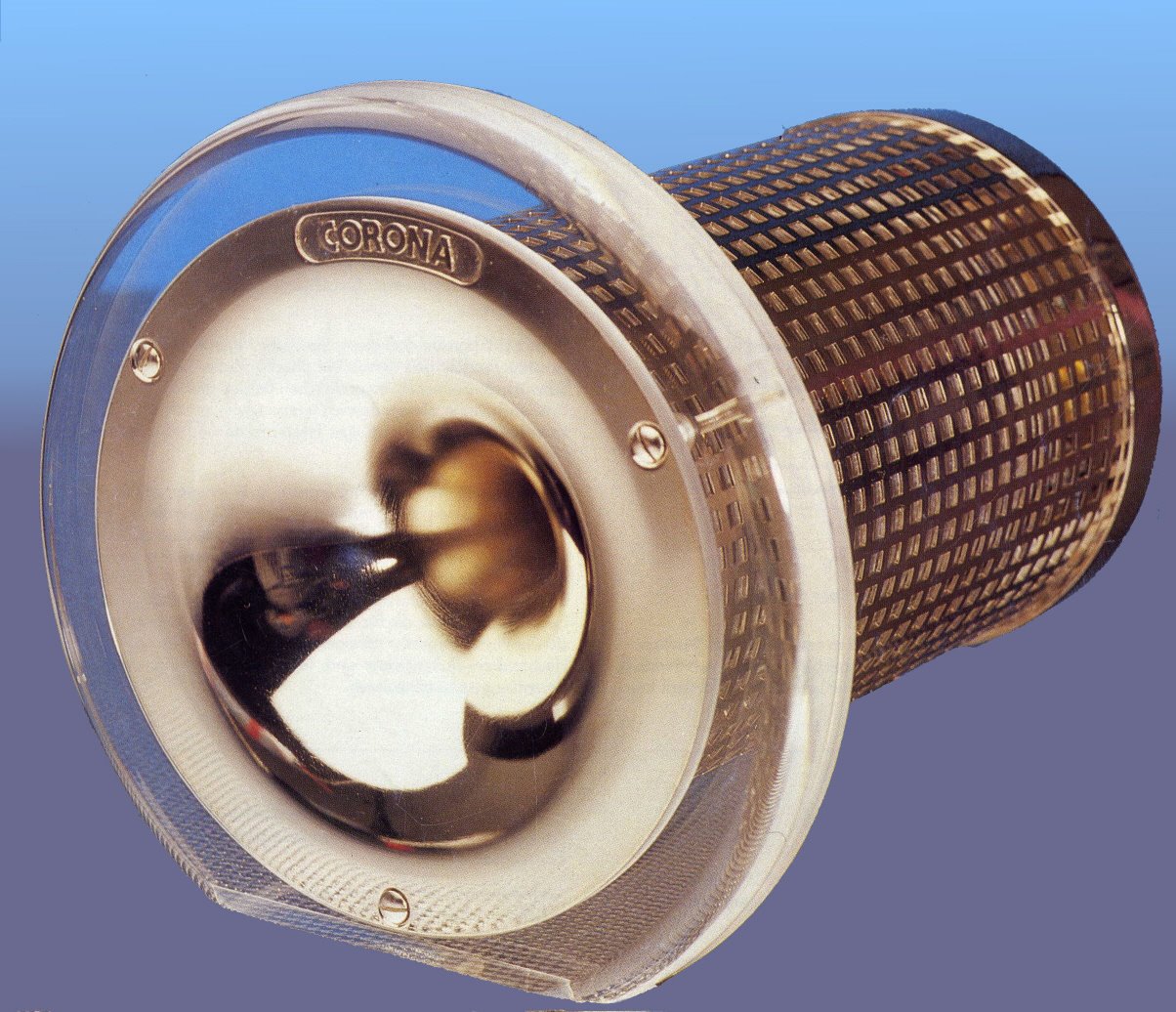 First off, it is a true point source. The resulting focus and imaging is outstanding. Being massless, the sound boasts a near perfect in-phase and impulse-response as you can get. Also, the outrageous 99 dB efficiency allows for outstanding dynamic response with even the lowest watt amplifiers.
First off, it is a true point source. The resulting focus and imaging is outstanding. Being massless, the sound boasts a near perfect in-phase and impulse-response as you can get. Also, the outrageous 99 dB efficiency allows for outstanding dynamic response with even the lowest watt amplifiers.
The midrange driver crosses over at 3-kHz into the Corona tweeter speaking of one lovely voice. Seriously, the ability to draw that much speed out of a conventional driver while maintaining the beguiling level of transparency, ease and shear dynamic output, is a hell of a magic trick. When called upon, music just leaps from the drivers. The transient speed and fidelity from top to bottom is outstanding. The Corona tweeter has endless resolution without a smudge of exaggeration. We are talking clean, quick and in ideal proportion to fundamental. Compared to the Sunny Cable Technology speaker, the sheer scale of cymbal crashes or high hat rides are a bit smaller in space but read incredibly realistic.
Coupled to those wonderful traits is the ability to resolve tons of air within the note’s fundamental or out into the surrounding acoustic. This gives the 4.1 a sunny luminous character without the added brightness or speaker induced bite and edge. There is not one disc that did not benefit from this. This was true of the Sunny speaker that preceded it, but I had to apply more equalization to the upper registers of the Sunny in order to achieve the right balance. Even then, the sound was more mid rangy through the Sunny.
The 4.1’s mid-band. Ah yes, the mid-band. Super fast, capable of great resolution wide band dynamic range and a freedom from any distracting form of coloration or non-linearity. Yes, they may have a touch of yang character in my room, but I didn’t give it a second thought. Adjusting the Corona tweeters volume can swing this trait into the other direction. I personally like the lighter side of the 4.1. It allows you to hear deeper and with greater focus into the music. Getting a handle on this was challenging as the 4.1 is quite chameleon-like. When I thought I had it pegged, another track would transform my impressions, leaving me wounded, but ready to fight another day.
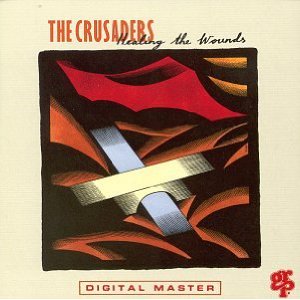 Speaking of wounds, The Crusaders Healing The Wounds (GRP-1398) was one of the very first CD’s I ever bought. Having listened to this disc through nearly every component I have ever reviewed, this funky ‘80s collection of mainstream easy listening fusion has gone from nearly unlistenable, way too much glare on the horns which dominate the melodies, to a sonic treat through the Lansche. Engineered to leap out of your speakers, the dynamic peaks skate a razors edge of brightness and glare. The 4.1 allows all of the character of the recording to shine through while tracking the high level dynamics without the glare or hardness. This is no small deal to me as I tend to listen at high levels due to the size of my room. In this regard, the 4.1 has become indispensable in the enjoyment of the many recordings that are engineered similarly.
Speaking of wounds, The Crusaders Healing The Wounds (GRP-1398) was one of the very first CD’s I ever bought. Having listened to this disc through nearly every component I have ever reviewed, this funky ‘80s collection of mainstream easy listening fusion has gone from nearly unlistenable, way too much glare on the horns which dominate the melodies, to a sonic treat through the Lansche. Engineered to leap out of your speakers, the dynamic peaks skate a razors edge of brightness and glare. The 4.1 allows all of the character of the recording to shine through while tracking the high level dynamics without the glare or hardness. This is no small deal to me as I tend to listen at high levels due to the size of my room. In this regard, the 4.1 has become indispensable in the enjoyment of the many recordings that are engineered similarly.
 Great recordings like Eva Cassidy’s Live at Blues Alley, from which an entire review could survive on the feast of sonic delights provided by this recording, really puts the 4.1 into its element. Track 2, “Stormy Monday,” ends on a sweeping vocal crescendo that the 4.1 just stays the heck out of the way of. No edge, no shifts in image or flattening of texture. This is what a super speaker should do, stay as far out of the way as possible, and the 4.1 succeeds in a big way in this regard.
Great recordings like Eva Cassidy’s Live at Blues Alley, from which an entire review could survive on the feast of sonic delights provided by this recording, really puts the 4.1 into its element. Track 2, “Stormy Monday,” ends on a sweeping vocal crescendo that the 4.1 just stays the heck out of the way of. No edge, no shifts in image or flattening of texture. This is what a super speaker should do, stay as far out of the way as possible, and the 4.1 succeeds in a big way in this regard.
Related to the transparency and lack of sonic editorial, comes the ability to sort out and maintain the separation of instrumental lines and their accompanying images. Up to the dynamic limits, the 4.1 was able to hold the varying instruments firmly in space and unencumbered by any vagaries or masking. The champ at this is the Sunny Cable Technology SWH15, though the 4.1 hardly suffers by comparison. This is largely a function of what is a very quiet speaker.
The bass drivers, once properly adjusted really surprised me as to how seamless they integrate to the mid-band. The bass system, with its 80,000mf filtering capacity and 500VA toroidal transformers per channel, is wicked powerful and can easily overwhelm any room or cloud the lower midband if not properly setup. I say error on the side of subtraction and work your way from there. With the controls set as of now, I am getting a level of extension, deep into the twenties with neck snapping transient speed. 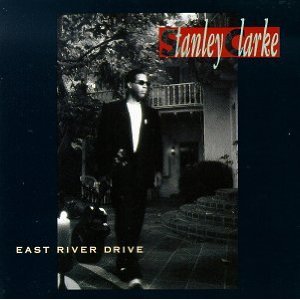 Incredible bass control and wonderful color and texture such as those found onEast River Drive (Epic) from Stanley Clark. Offering up a ton of great bass lines from the subterranean to the upper registers of a piccolo bass, it’s all in there. The lowest octaves on “Justice’s Groove” quiver and shudder with absolute control and pitch. It’s tough to get even one of those qualities, never mind both at once. What’s great is that you can enjoy all the action in the bass without giving up lower mid-band information due to bass creep.
Incredible bass control and wonderful color and texture such as those found onEast River Drive (Epic) from Stanley Clark. Offering up a ton of great bass lines from the subterranean to the upper registers of a piccolo bass, it’s all in there. The lowest octaves on “Justice’s Groove” quiver and shudder with absolute control and pitch. It’s tough to get even one of those qualities, never mind both at once. What’s great is that you can enjoy all the action in the bass without giving up lower mid-band information due to bass creep.
The bass is neither dry nor flabby, unless recorded that way. Acoustic bass ranged from soft and reverberant to super-tight and extended. There was just no way to pin any real character to the 4.1. If forced to, I would say the bass is a tad warmish. On the whole the bass performance is a huge surprise to me as this was the one area I was most concerned about before ordering the 4.1. How could the 4.1’s internal amplifiers ever keep up with my Behold BPA768 amplifier? The proof is in the pudding as they say, and my hat is off to Mr. Lansche for this achievement. What’s nice is if one should choose to throw a disco party as my wife is known to do, simply juice up the bass via a few clicks of the knobs in back and presto!! Disco approved bass levels! I could never get the drivers to bottom out as the Corona tweeter would begin to flicker and that is a sign that you must back off the volume. This is the one area where I miss the Sunnys’ ability to move vast swathes of air in my 36x60x14 living room. Any room even 10 percent smaller would not encounter this issue.
An area the 4.1 performs more effectively in my room than the big Sunny is imaging and staging. The 4.1, being of smaller stature than the Sunny, allows for a more natural perspective. The Sunny’s imaging is a tad too high for my taste. The 4.1 is more intimate. The Sunny’s image is one of grand gesture, the Lansche is about carving of contours and inner detail. The Lansche is better able to separate the acoustic from the fundamental in a wholly realistic way. The Sunny, by contrast, does project an awesome display of scale though by comparison, the images appear a bit softer in focus.
Is there any real downside with the Lansche 4.1? They do require more time than some to burn in though not excessively so. They do demand more from the purchaser in the set up and adjustment phase. And there is an issue of price. At $55K only a few may be able to enjoy them. Do not leave the tweeter on or else it will burn out quicker (five thousand hours is the projected life span of the Corona tweeter). Also there is the issue of ancillary gear. As for up stream gear you better have real bullets in that holster ‘cause you are going to need them cowboy. These speakers are extremely revealing of upstream components from chords to supports to all far corners of the audio chain.
On the other hand, at 99db efficiency, tubes are welcome. I cannot wait to get a great set of valve amps to put on these. Then there is the cool factor, which is important to me. With all that makes up the 4.1 the pride in owner ship is off the charts with these speakers. Flip the rocker switch sit back and watch the Corona tweeter blaze into being. Fire is making sound!! How cool is that!! Lansche owns the patent to Corona so there are few who can yawn and declare dismissively “been there, done that!”
There is hot competition in the 4.1’s price point. However, in my opinion, too many of them are “me too” products for my taste. I am wired to need something truly unique to really get me going.
All considered, fit, finish, performance, cool factor, and let’s not forget the blue lit Lansche logo aglow on the front of the baffle, we are dealing with something high-end audio should be all about delivering: making listening to music transformative, revelatory and transcendent. If those are your goals, look no further that the Lansche 4.1.

![]()
Description:
2-way closed speaker with integrated active subwoofer
Tweeter-1X0.3 in. Corona iontweeter
Midrange-1×8 in. paper cone, coated
Woofer-2×10 in. paper coated cone
Crossover Frequencey-150Hz, 2500Hz
Impedence-8 Ohm
Sensitivity-99db/1W/1m
Maximum level-115 db/1m
Frequency Range-20 Hz-150kHz plus/minus 3db
Internal wiring-Silver plated OFC
Weight-60 kg
Price: $55,000
US Distributor
Aaudio imports
4871 Raintree Drive
Parker CO, 80134
Tel.: 720-851-2525
Fax: 720-851-7575
(cel) 303-264-8831
Email: brian@aaudioimports.com
Web: www.aaudioimports.com
![]()
Don’t forget to bookmark us! (CTRL-SHFT-D)
Stereo Times Masthead
Publisher/Founder
Clement Perry
Editor
Dave Thomas
Senior Editors
Frank Alles, Mike Girardi, Key Kim, Russell Lichter, Terry London, Moreno Mitchell, Paul Szabady, Bill Wells, Mike Wright, Stephen Yan, and Rob Dockery
Current Contributors
David Abramson, Tim Barrall, Dave Allison, Ron Cook, Lewis Dardick, Dan Secula, Don Shaulis, Greg Simmons, Eric Teh, Greg Voth, Richard Willie, Ed Van Winkle, and Rob Dockery
Music Reviewers:
Carlos Sanchez, John Jonczyk, John Sprung and Russell Lichter
Site Management Clement Perry
Ad Designer: Martin Perry






Be the first to comment on: Lansche Audio No.4.1 Loudspeaker